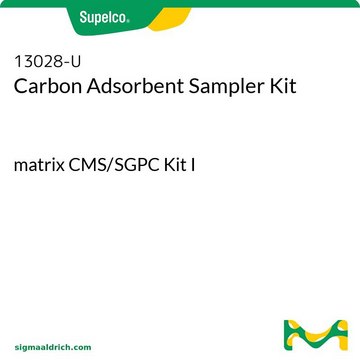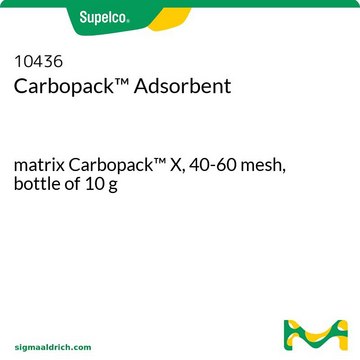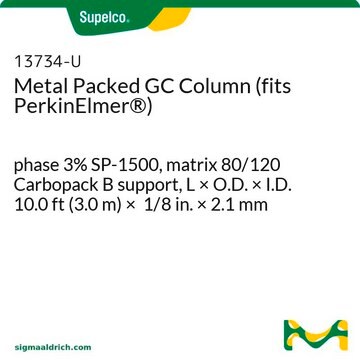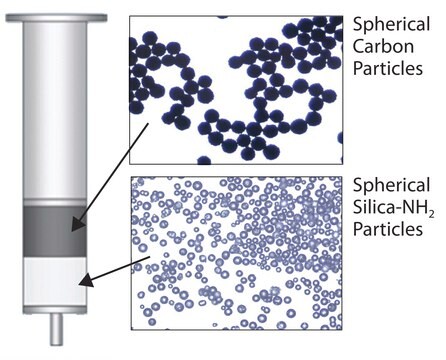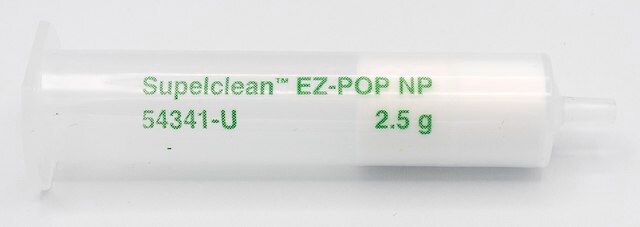おすすめの製品
製品名
Carboxen®-1016, matrix Graphsphere™ 2016, 60-80 mesh, bottle of 10 g
詳細
Formally Carboxen® 1016
製品種目
Carboxen®
Graphsphere™
フォーム
powder
包装
bottle of 10 g
テクニック
LPLC: suitable
表面積
~75 m2/g
Matrix
Formally Carboxen® 1016
Graphsphere™ 2016
マトリックス活性基
carbon
粒径
60-80 mesh
ポアサイズ
~0.34 cm3/g mesoporosity
~0 cm3/g macroporosity
~0 cm3/g microporosity
~0 Å pore diameter
密度
~0.41 g/mL (free fall density)
アプリケーション
sample preparation
分離法
reversed phase
詳細
- Spherical (better packed bed performance than granular particles)
- Hard and non-friable (pack well, will not break)
- Used for molecules with an analyte size relative to C5-C12 n-alkanes
- Hydrophobic (can be used in high humidity environments)
Generally, SGPC adsorbents offer weaker relative adsorptive strength compared to carbon molecular sieve (CMS) adsorbents, and similar relative adsorptive strength compared to graphitized carbon black (GCB) adsorbents. Our Graphsphere™ products are a type of SGPC adsorbent. They are great alternatives to GCB adsorbents (which are granular and friable).
For more information about any of our specialty carbon adsorbents, please visit sigma-aldrich.com/carbon
法的情報
保管分類コード
11 - Combustible Solids
WGK
nwg
引火点(°F)
Not applicable
引火点(℃)
Not applicable
適用法令
試験研究用途を考慮した関連法令を主に挙げております。化学物質以外については、一部の情報のみ提供しています。 製品を安全かつ合法的に使用することは、使用者の義務です。最新情報により修正される場合があります。WEBの反映には時間を要することがあるため、適宜SDSをご参照ください。
Jan Code
11021-U:
最新バージョンのいずれかを選択してください:
この製品を見ている人はこちらもチェック
資料
Carbon Molecular sieves (CMS) are a versatile range of adsorbents that can be tailored for specific applications. Supelco® scientists have been synthesizing synthetic CMS carbons for several decades, starting from tailoring of the starting polymers/copolymers, to modifying the final properties of the subsequent CMS carbon.
ライフサイエンス、有機合成、材料科学、クロマトグラフィー、分析など、あらゆる分野の研究に経験のあるメンバーがおります。.
製品に関するお問い合わせはこちら(テクニカルサービス)
